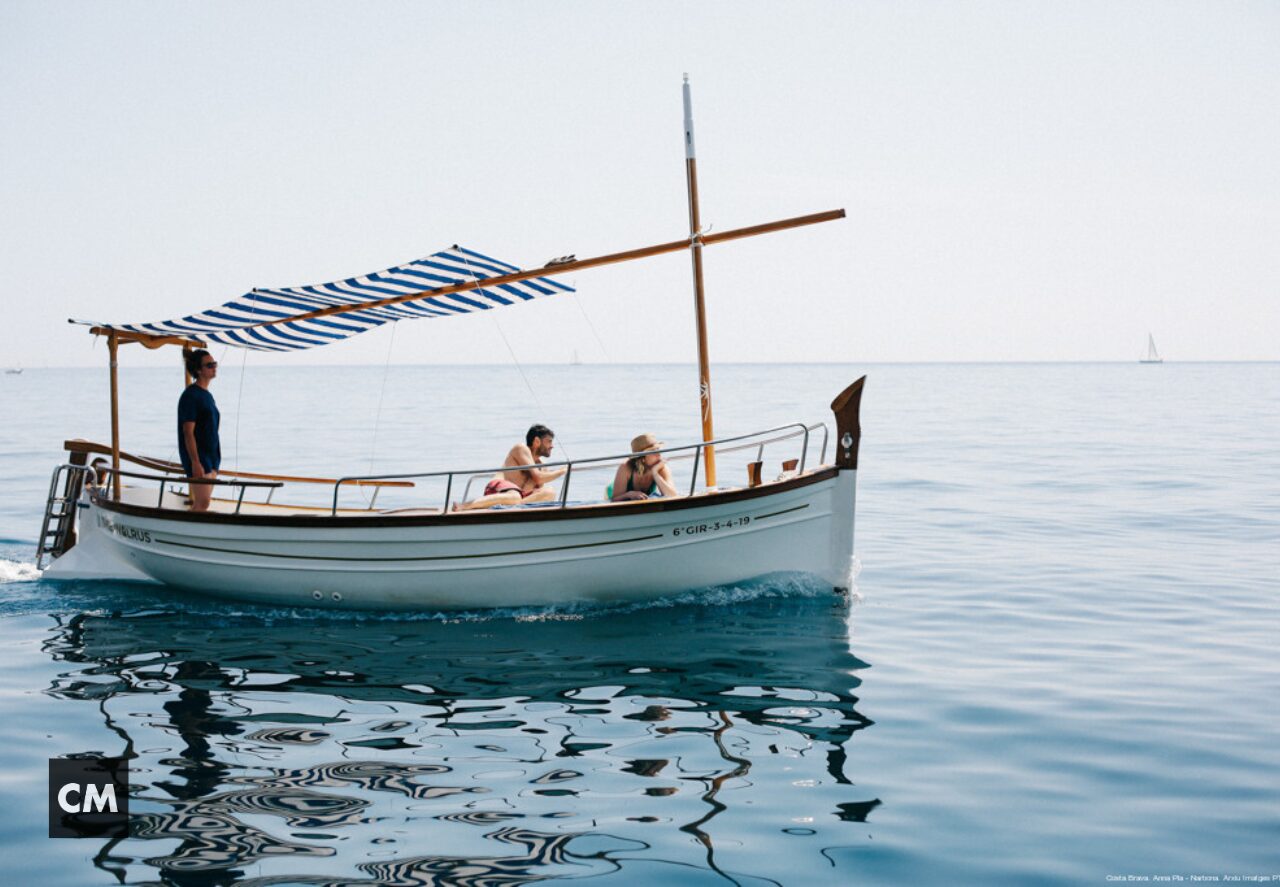The Costa Brava, with its rugged coastline, crystal clear waters and rich history, is home to towns with a special charm that seduce visitors from all over the world. From Corredor Mató, experts in properties and experiences in this region, we want to share our selection of the 5 most beautiful towns on the Costa Brava, ideal for living or enjoying an unforgettable getaway.
Tag: Catalonia
Where to Stay in Tamariu: Live the Authentic Mediterranean Experience
Posted on by Sebastià Morató
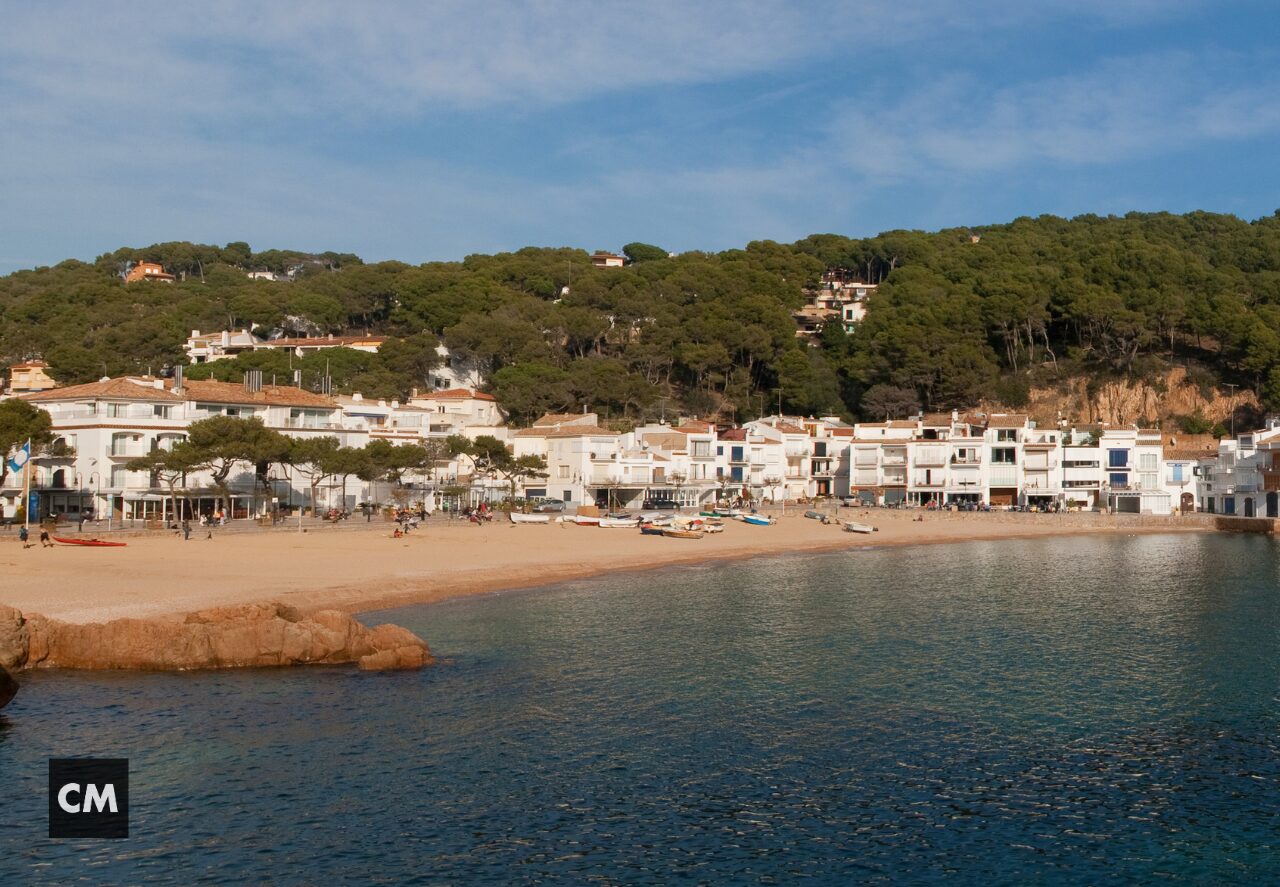
If you’re looking for a lovely place to stay in Tamariu, you’ve come to the right place. Tamariu, one of the jewels of the Costa Brava, is a small fishing village with crystal clear waters, a golden sandy beach and a peaceful atmosphere that invites you to disconnect. Whether you are traveling as a family, with a partner or with friends, this corner of the Mediterranean has accommodation options for all tastes.
1. Sea View Apartments
One of the biggest attractions of Tamariu are its panoramic views of the Mediterranean. Imagine waking up to the sound of the waves and enjoying breakfast on the terrace in front of the sea. In Corredor Mató we have perfectly located apartments, very close to the beach, ideal for those looking to relax in a privileged environment. In addition, our properties are equipped with everything necessary to make you feel at home.
2. Charming houses in the Town Center
For those who want to immerse themselves in local life, staying in the heart of Tamariu is an excellent option. Here you can stroll through the streets, visit the small shops, taste the typical cuisine in its restaurants and sit and watch the fishing boats come and go. In Corredor Mató we offer charming houses and apartments in the center, where the authenticity of Tamariu is experienced at every step.
3. Villas with Space and Privacy
If you prefer a more exclusive environment, the villas in Tamariu offer you spaciousness, privacy and the possibility to enjoy a private garden or pool. They are ideal for large families or groups of friends who want to share unforgettable moments, whether preparing an outdoor barbecue or relaxing after a day at the beach. Our team at Corredor Mató can advise you to find the perfect villa that suits your needs.
4. Personalized Advice
At Corredor Mató, as experts in properties and experiences on the Costa Brava, we not only offer you a list of accommodation, but also a close and personalized service. We know Tamariu perfectly, and we will be happy to help you choose the best option, whether it’s an apartment with a view, a typical house or a family villa. In addition, we will provide you with recommendations on what to do, where to eat and how to get the most out of your stay.
5. Your Home on the Costa Brava
Our mission is to make you enjoy Tamariu as if you were another resident. We know that accommodation is key to your travel experience, which is why we provide you with a wide variety of carefully selected properties to ensure your comfort and satisfaction.
Ready to find your Ideal Accommodation in Tamariu?
Tamariu is the perfect place to disconnect, enjoy the sea and immerse yourself in the essence of the Costa Brava. At Corredor Mató we will be happy to accompany you in the search for the ideal accommodation, so that your stay becomes an unforgettable experience.
Discover the Costa Brava in 7 Days: An Unforgettable Route
Posted on by Sebastià Morató
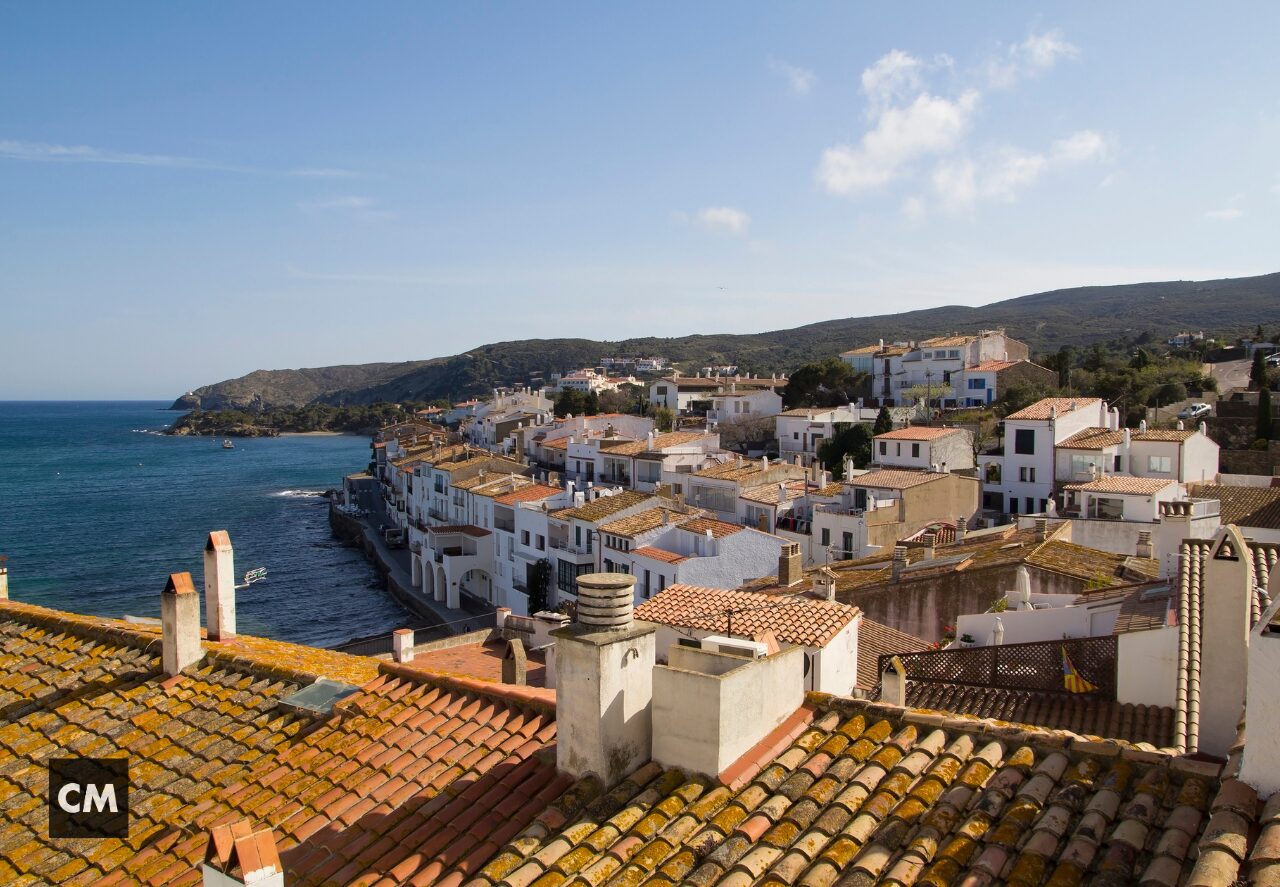
Are you thinking about a 7-day route along the Costa Brava? At Corredor Mató, experts in properties and experiences on the Costa Brava, we propose an itinerary to help you make the most of this unique destination. With its crystal-clear coves, charming towns, and incredible natural landscapes, the Costa Brava will captivate you step by step.
Day 1: Llafranc and Tamariu
Begin your adventure at the tranquil coves of Llafranc and Tamariu, with crystal-clear waters perfect for a refreshing swim and relaxing in the sun.
Corredor Mató Tip: We can help you find a vacation rental property near these coves, ideal for families or romantic getaways.
Day 2: Platja d’Aro and Calella de Palafrugell
Head to Platja d’Aro, known for its wide range of dining and shopping options. Afterwards, venture toward Calella de Palafrugell, a former fishing village that still preserves its Mediterranean essence.
A Must: Walk the coastal path (Camí de Ronda) to Llafranc and enjoy the sunset on a terrace by the sea.
Day 3: Sant Feliu de Guíxols and S’Agaró
Continue your route in Sant Feliu de Guíxols, a seaside town with a seafront promenade that’s perfect for connecting with the Mediterranean. Then visit S’Agaró, where you can follow the Camí de Ronda and admire spectacular coastal views.
Day 4: Begur and its Coves
Begur is synonymous with history and dreamy beaches. Climb up to the castle for an impressive panoramic view and, in the afternoon, lose yourself among the coves of Sa Tuna or Aiguablava.
Local Experience: Try the seafood rice dishes at a restaurant overlooking the Mediterranean. If you fall in love with the area, we have properties for sale to turn your vacation into a lifestyle.
Day 5: Pals and Peratallada
Head inland into the Baix Empordà region to discover medieval villages like Pals and Peratallada, where time seems to stand still. Stone streets, towers, and squares will transport you to another era.
Recommendation: After the buzz of the coast, you’ll enjoy the rural tranquility. Are you looking for a second home surrounded by history? Contact us and we’ll show you the best options.
Day 6: Palamós and Palafrugell
Return to the coast to savor the fishing atmosphere of Palamós, famous for its fish market and the Fishing Museum. Later, visit Palafrugell to explore its markets and cultural scene.
Gastronomic Tip: Don’t leave without trying Palamós shrimp. And if you’d like to stay longer, we can help you find the perfect home in the area.
Day 7: L’Escala and Empúries
Wrap up your week by visiting L’Escala, renowned for its anchovies and maritime charm. Afterwards, explore the archaeological site of Empúries, where you can learn about the region’s Greco-Roman history. Strolling among ruins with sea views is a unique experience.
Corredor Mató Recommendation: If history and the sea have captivated you, we can advise you on nearby properties, so that your stay on the Costa Brava extends beyond this getaway.
A 7-day route along the Costa Brava will allow you to discover a unique coastline, with fishing villages, hidden coves, historical heritage, and exceptional gastronomy. At Corredor Mató, we’d be delighted to help you find the perfect property so you can experience the Costa Brava like a true local. We await you with the keys to your next Mediterranean adventure!
Living All Year on the Costa Brava: Quality of Life and Mediterranean Charm
Posted on by Sebastià Morató
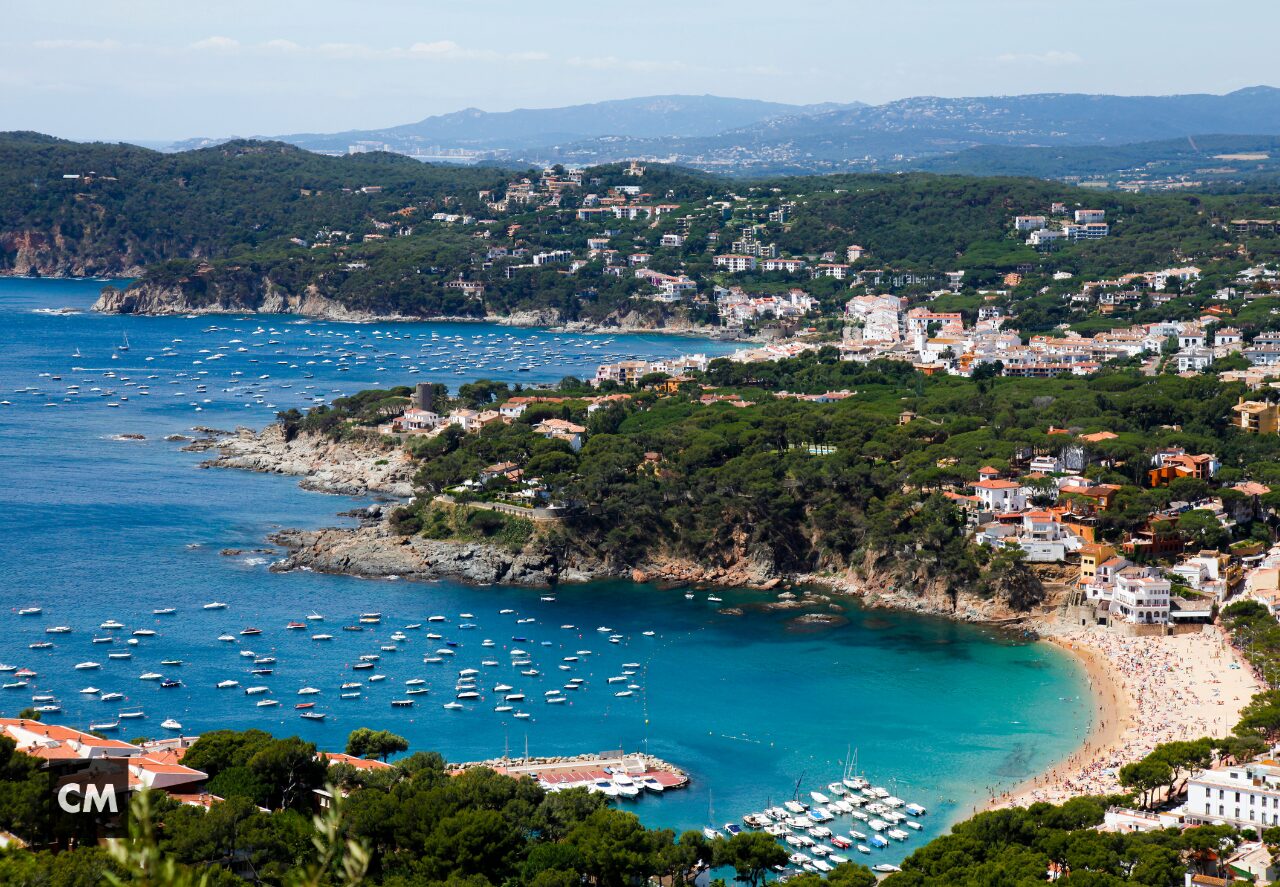
The Costa Brava, known for its spectacular beaches and landscapes, is not only a holiday destination, but also a perfect place to settle down all year round. With the temperate climate, its rich cultural offer and its relaxed lifestyle, living all year round on the Costa Brava means enjoying an exceptional quality of life. If you’re thinking of moving, here’s why this region is the ideal place to live.
1. A pleasant climate all year round
The Mediterranean climate of the Costa Brava offers mild winters and warm summers. During the colder months, temperatures rarely drop below 10°C, allowing outdoor activities to be enjoyed all year round. This climatic stability makes the region perfect for both those seeking tranquility and the more active.
2. Unparalleled Nature and Landscapes
Living on the Costa Brava means being surrounded by natural beauty. From the crystalline waters of the coves and beaches to the natural parks such as Cap de Creus or Les Gavarres, nature here is a true luxury. In addition, the Camins de Ronda offer spectacular routes for walking or hiking while enjoying sea views.
3. Towns with Charm and Tradition
The Costa Brava is dotted with picturesque villages that combine tradition and modernity. Places such as Tamariu, Begur, Pals, Cadaqués or Calella de Palafrugell are ideal places to live, thanks to their welcoming atmosphere, historic architecture and quality services. In addition, life in these towns offers the tranquility of a rural environment with proximity to larger cities such as Girona.
4. First Class Gastronomy
The gastronomy of the Costa Brava is another of the great attractions. Living here means enjoying fresh and local products, from fish and seafood to fruit, vegetables and wines from the Empordà region. In addition, the Costa Brava has an impressive range of restaurants, some of which have been awarded Michelin stars.
5. Excellent Services and Connections
Despite being a quiet region, the Costa Brava is well connected with the rest of Catalonia and Europe. With Girona airport a few kilometers away and access to the AP-7 motorway, traveling is easy and fast. In addition, the area has excellent medical services, international schools and a growing expat community, making it ideal for families and professionals.
6. A Relaxed Rhythm of Life
One of the biggest benefits of living on the Costa Brava is the change of pace. Here, life takes place more slowly, allowing you to enjoy every moment. From walks on the beach to afternoons on terraces with sea views, living here means prioritizing well-being and quality of life.
7. Activities All year round
The Costa Brava is not just for summer; throughout the year there are cultural, sports and leisure activities. You can take part in local festivals, explore hiking trails, cycle indoors, or enjoy water activities like kayaking and snorkeling. In addition, the winter months are ideal for discovering medieval towns and local traditions.
Why Choose the Costa Brava to Live All Year
Living all year on the Costa Brava doesn’t just mean enjoying spectacular landscapes and a pleasant climate, but also a welcoming community and a lifestyle that prioritizes quality and well-being. If you are looking for a place where you can combine tranquility, nature and culture, the Costa Brava is your ideal destination. Discover everything this region has to offer!
Hiking Routes on the Costa Brava: Discover the Camins de Ronda and More
Posted on by Sebastià Morató
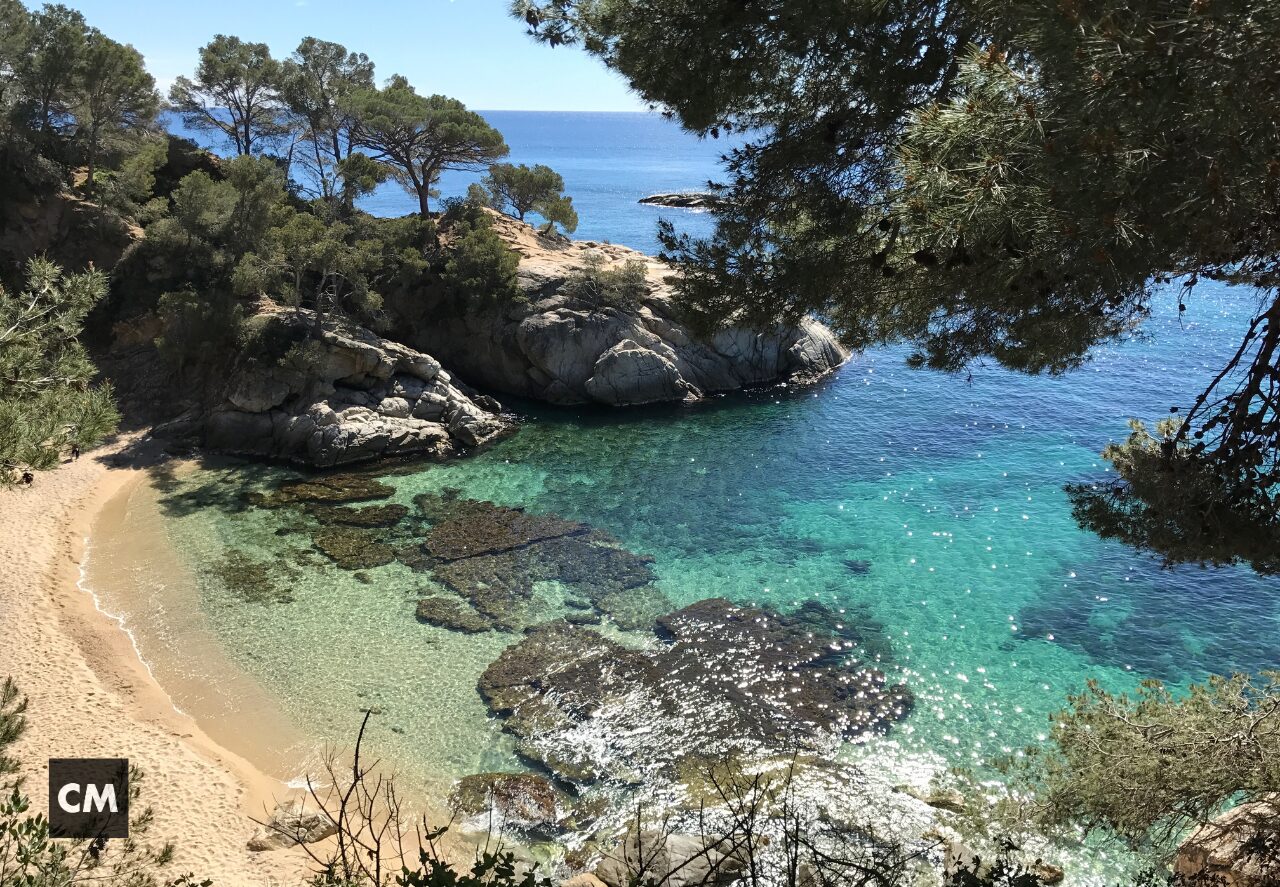
The Costa Brava is not just a summer destination; it is also a paradise for hiking lovers. The rugged coastline, picturesque villages and Mediterranean forests offer a variety of routes for all levels. Below, we present some of the best hiking routes on the Costa Brava that stand out for their impressive views, natural wealth and diversity of landscapes.
1. Camí de Ronda: Llafranc to Calella de Palafrugell
This is one of the most iconic routes on the Costa Brava. Starting from Llafranc, the path skirts the coast and allows you to discover hidden coves, spectacular viewpoints and beaches with crystal clear waters. The route to Calella de Palafrugell is easy and short, ideal for a two-hour round trip. Along the route, hikers can enjoy the views of the sea and the charms of these fishing villages.
2. Camí de Ronda: S’Agaró to Sa Conca
This section of the Camí de Ronda is known for its architectural beauty and ease of access, and is an ideal route for families. The walk starts at S’Agaró beach and follows a paved coastal promenade to the quiet beach of Sa Conca. Along the way, you’ll find viewpoints overlooking sea-sculpted rocks and beautiful stately villas. It is a short route of approximately one hour, perfect for enjoying a morning by the sea.
3. Camí de Ronda: Tamariu to Cala Pedrosa
This route is ideal for hikers looking for a challenge and want to discover hidden coves. Starting from Tamariu, the trail enters the Mediterranean vegetation and descends towards Cala Pedrosa, a small pebble cove surrounded by wild nature. The route is a bit steep in some sections, so it is recommended to wear suitable footwear. Upon arrival, hikers can rest in this secluded cove and enjoy a refreshing swim in the waters.
4. Route of the Botanical Gardens of Cap Roig
For lovers of nature and botany, the Cap Roig Botanical Garden in Calella de Palafrugell is a must-see destination. From the gardens, there are paths that allow you to explore the surroundings and enjoy spectacular views of the cliffs and the Mediterranean. This route combines the charm of a botanical garden with the impressive views of the sea, creating a unique environment that is ideal both for walking and for relaxing among plants and flowers.
5. Camí de Ronda: From Roses to Cala Montjoi
This path connects the town of Roses with the famous Cala Montjoi, where the famous El Bulli restaurant used to be. The route is of moderate difficulty and offers a panoramic view of the Cap de Creus Natural Park. Along the way, you can see coves such as Cala Calitjàs or Cala Pelosa, with crystal clear waters perfect for a dip if the weather permits. This round trip is about 4 hours, ideal for a full day excursion.
6. Montgrí Castle route
The Castell de Montgrí route is a walk that takes you to the top of the mountain, where the medieval castle of Montgrí is located, in Torroella de Montgrí. Although it is not a coastal route, the view from the top covers the entire Costa Brava, offering a panorama that includes the Medes Islands and the Empordà. The climb is of moderate difficulty and takes around 2 hours, rewarding hikers with an unparalleled view.
Tips for Enjoying Hiking on the Costa Brava
Wear appropriate footwear: Some routes, especially those that descend towards coves and rocky areas, can be uneven and require comfortable footwear with good support.
Plan ahead: Although many trails are easy to follow, it’s a good idea to bring a map or use hiking apps so you don’t get lost.
Respect nature: The Costa Brava is a protected natural environment, so it is important not to leave litter and respect the local flora and fauna.
Hydration and sun protection: Although the weather is mild in winter and spring, it is essential to bring water and protect yourself from the sun.
Discover the Costa Brava Step by Step
The Costa Brava offers hiking routes that combine sea, mountain and culture in a single route. From easy coastal walks to climbs offering spectacular views, there are options for all levels and tastes. Come and discover these trails and explore the Costa Brava in its purest and most authentic state.
The Costa Brava in Winter: Unique Experiences for Unforgettable Getaways
Posted on by Sebastià Morató
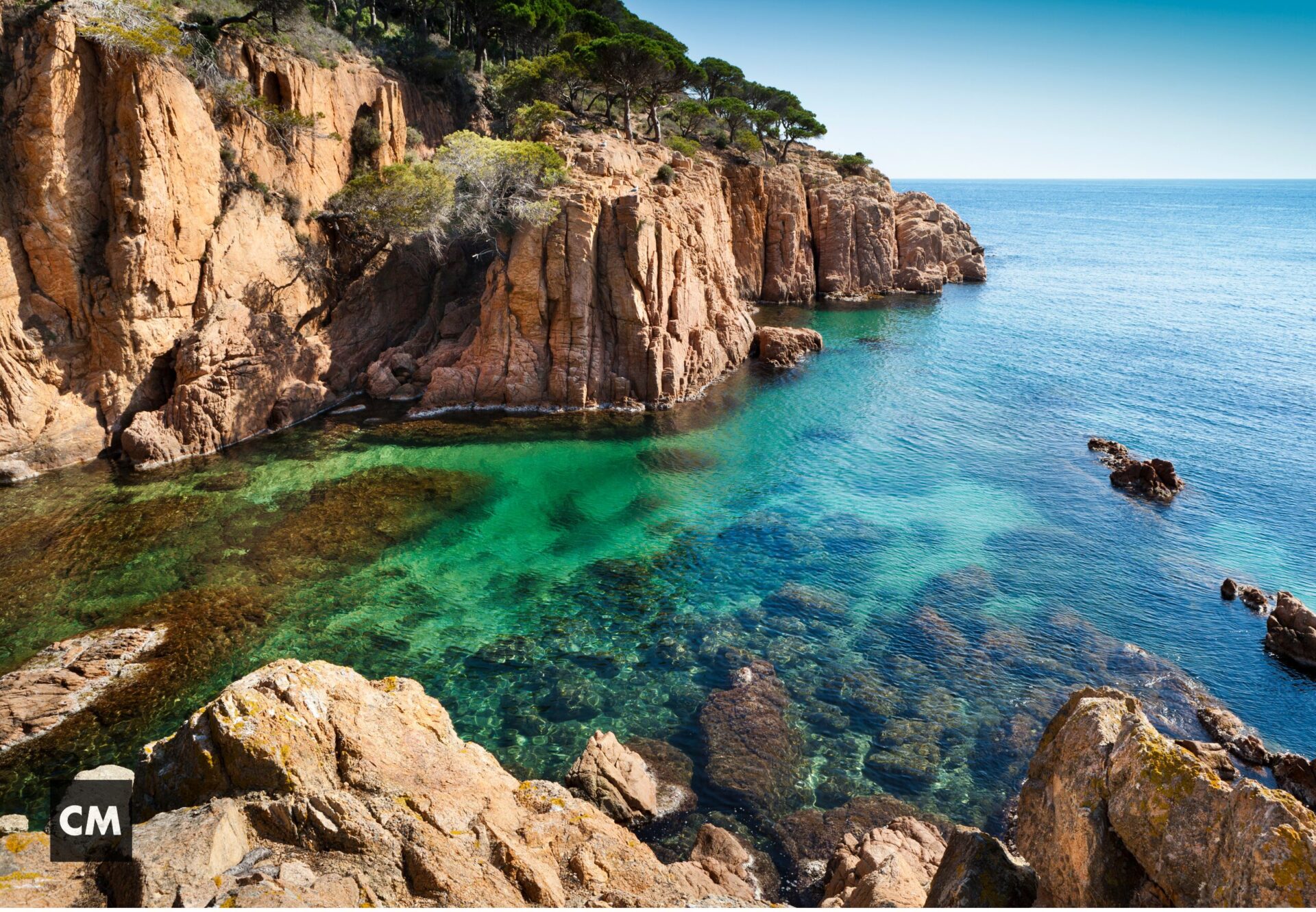
1. Birdwatching in the Montgrí Natural Park, the Medes Islands and the Baix Ter
In winter, the migratory activity of birds makes Montgrí Natural Park an ideal place to observe unique species at this time of year, such as flamingos and the osprey. The salt pans of Pals and the Baix Ter wetlands are key points within the park for birdwatching. Equipped with binoculars, you can explore the routes and enjoy an experience of direct contact with nature.
2. Landscape Photography Routes on the Coast
Winter offers special light and clear skies that are perfect for landscape photography. Some less crowded routes, such as the one from Cala S’Alguer to Palamós or the circuit path between Tamariu and Aiguablava, are ideal for capturing spectacular photos of the coast in its wildest state and without crowds. Also, in the early hours of the morning, you can photograph the sunrise with a sky tinted with pink tones.
3. Seafood Gastronomy activities at the Llotja de Palamós
The coast offers winter gastronomic experiences such as fishing and the fresh fish auction at the Palamós Market. During the winter, the fishermen return with fresh seasonal catches, such as monkfish and squid, perfect for tasting in the local fish market or restaurants. In addition, you can sign up for cooking workshops to learn how to prepare these seafood delicacies from local chefs.
4. Cultural Routes in Cadaqués
Cadaqués, a town that is very visited in the summer, becomes a quiet place in the winter. Walk the streets where Salvador Dalí lived and worked and discover corners such as the Santa Maria Church or the Cadaqués Museum without the hustle and bustle of the high season. It is also a good time to visit the house-museum in Portlligat, in a quieter and more personal environment.
5. Mushroom collection in the Bosc de les Gavarres
The Gavarres forests, a mountain massif near the Costa Brava, are an excellent destination for mycology lovers. In the winter, with the right conditions, you can find species such as yellowtail. Some local guides offer trips to pick mushrooms and learn about the native varieties. It is an activity that connects you with nature and, in addition, allows you to enjoy the rural landscape of the Costa Brava in its most authentic era.
6. Relaxation sessions at Coastal Spas
Winter is an ideal time for relaxation, and the Costa Brava has luxury spas that offer unique experiences overlooking the sea. Aqua Roman Baths in Girona combines physical well-being with the natural environment. Here you can enjoy thermal baths, massages and water circuits perfect for resting and reconnecting in a relaxing environment.
7. Winter Diving Excursions in the Medes Islands
Winter diving is possible and very popular with experienced divers looking to explore the Medes Islands, known for their rich marine life. With proper equipment for the low temperatures, you can enjoy clear visibility to see species of fish, algae and corals that are unique to this marine reserve. Some companies offer trips for certified divers, which is ideal for sea enthusiasts looking for a less conventional experience.
Experience the Costa Brava with a New Approach
Winter on the Costa Brava is perfect for those who want to discover its natural landscapes and heritage without the high season traffic. From outdoor activities to relaxation experiences, the Costa Brava has a lot to offer in winter.
What to see in La Bisbal de l’Empordà: An unmissable destination in the Heart of Catalonia
Posted on by Sebastià Morató
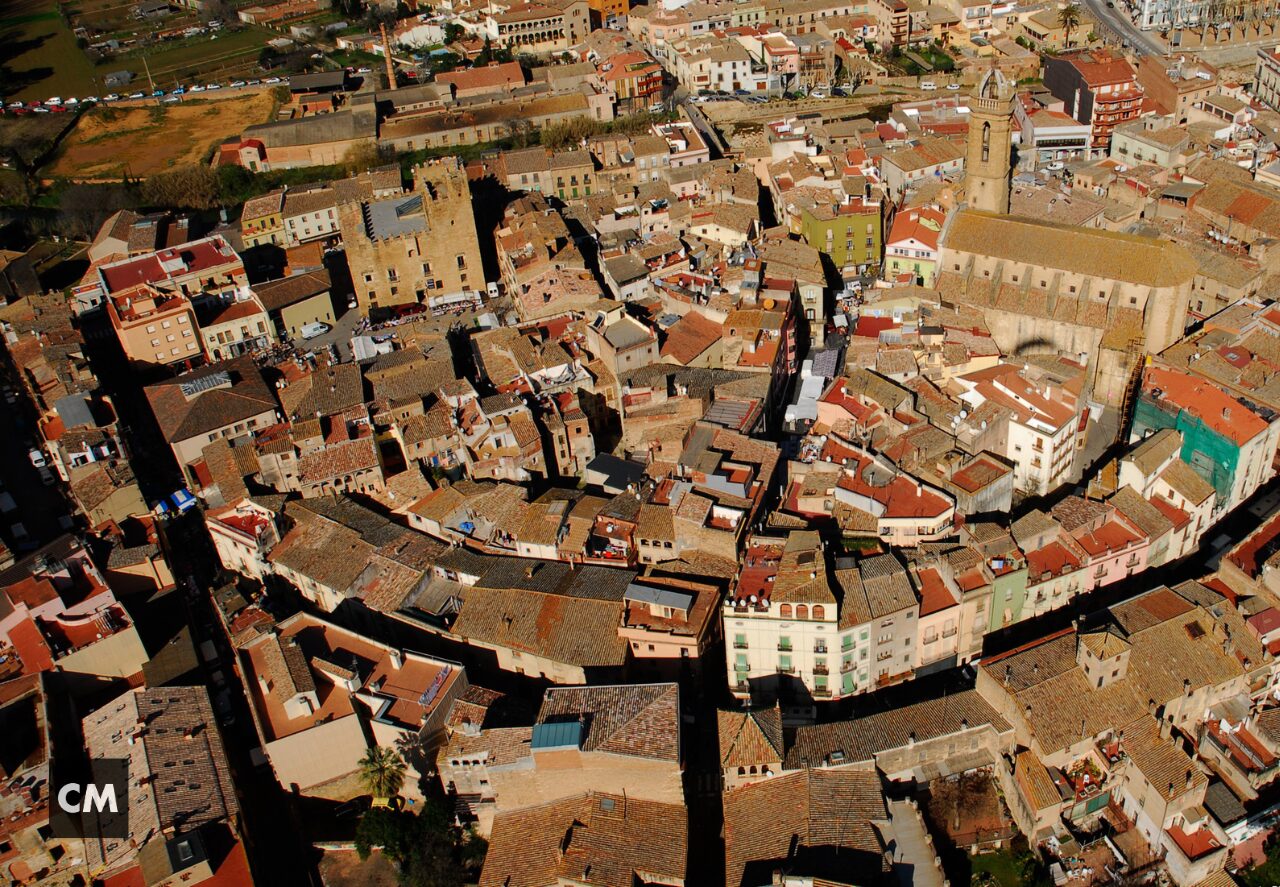
Castle-Palace of the Bisbal
This imposing 11th century castle is the symbol of the city. Its Romanesque and Gothic architecture offers a journey back in time. Don’t miss the chance to climb the tower to enjoy breathtaking panoramic views of the city and its surroundings.
The Terracotta Museum
La Bisbal is famous for its ceramic tradition. The Terracotta Museum, located in an old ceramics factory, exhibits a large collection of pieces and offers workshops where you can learn this ancient craft.
Carrer de l’Aigüeta
This street is the commercial heart of La Bisbal, known for its ceramic shops. Here you can find everything from decorative items to everyday utensils, all handmade by local artisans. Strolling down Carrer de l’Aigüeta is a unique experience that allows you to take a piece of Bisbal tradition home with you.
Church of Santa Maria
The Church of Santa Maria, with its late Gothic style, is another point of interest. The impressive facade and the interior full of architectural details make it a must-see for lovers of history and religious architecture.
The Old Bridge
The Old Bridge is a medieval structure that crosses the Daró River. It’s perfect for a relaxed stroll, offering picturesque views of the river and city. It is an ideal place to take pictures and enjoy the tranquility of the surroundings.
The Castle Gardens
These gardens, located around the Castle-Palau, are a perfect place for a peaceful stroll. With a wide variety of plants and flowers, the gardens offer a green haven in the middle of the city, ideal for relaxing and enjoying nature.
Markets and Fairs
La Bisbal de l’Empordà hosts several markets and fairs throughout the year. The weekly market is a great place to discover fresh local produce, crafts and more. In addition, antique and pottery fairs are prominent events that attract visitors from all over.
Local Gastronomy
You cannot leave La Bisbal without tasting its delicious cuisine. From traditional Catalan dishes to local specialties, the city’s restaurants and bars offer a culinary experience that will delight your palate.
La Bisbal de l’Empordà is a destination that combines history, culture and natural beauty, offering something for every type of traveller. Whether you are interested in architecture, ceramics, or simply enjoy a charming environment, this corner of Catalonia awaits you with open arms.
The best family beaches on the Costa Brava: Perfect destinations to enjoy with the little ones
Posted on by Sebastià Morató
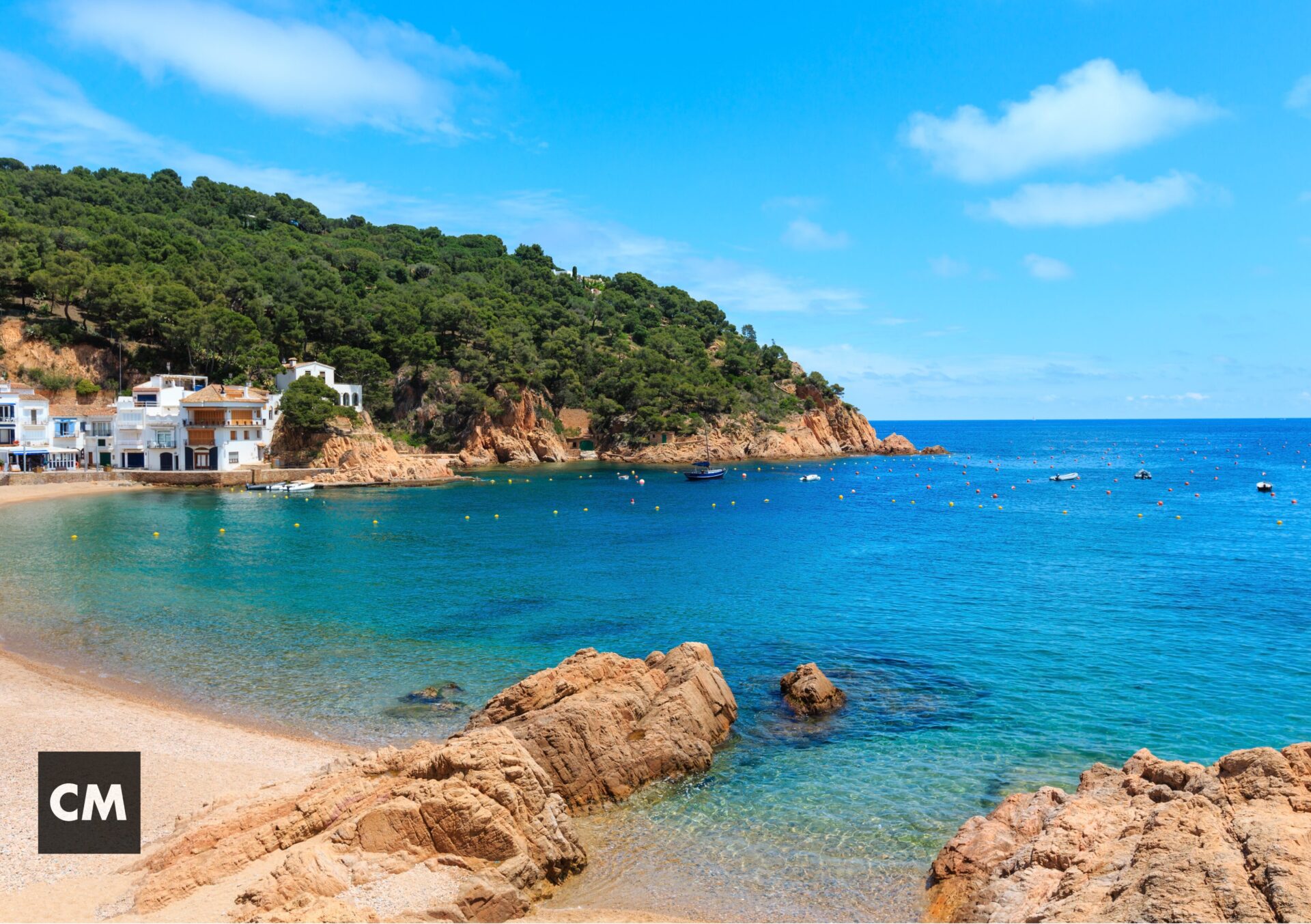
The Costa Brava is known for its stunning coastline and hidden coves, but it is also an ideal destination for family fun. If you’re looking for a place where the little ones can play, swim and enjoy themselves in a safe and fun environment, these are some of the best family beaches on the Costa Brava that you can’t miss.
1. Platja Gran (Platja d’Aro)
Platja Gran de Platja d’Aro is one of the most popular beaches for families looking for comfort and fun. It is a wide beach, with fine, golden sand, ideal for children to play and build sand castles. In addition, it has all the necessary services: lifeguards, showers, umbrella and sunbed rental, and restaurants very close by.
Advantages: Easy access, complete services and a wide range of activities.
Best for: Families with young children looking for comfort and fun.
2. Sant Antoni Beach (Sant Antoni de Calonge)
Located between Palamós and Sant Antoni de Calonge, this beach is one of the best options for families due to its tranquility and relaxed atmosphere. The waters are shallow and very clean, perfect for children to swim carefree. In addition, there is a long promenade with play areas, restaurants and ice cream parlors for family enjoyment.
Advantages: Calm waters, family atmosphere and nearby services.
Ideal for: Families looking for a relaxed day at the beach with walking options.
3. Cala Giverola (Tossa de Mar)
Cala Giverola is a beautiful cove located a few kilometers from Tossa de Mar, perfect for families looking for a more natural environment but with amenities. Its access is easy and it has a range of activities such as kayaking and snorkelling, which will make both children and adults enjoy the sea to the fullest.
Advantages: Natural environment, water activities and crystal clear waters.
Ideal for: Families looking for a mix of adventure and relaxation in a more intimate environment.
4. Pals Beach
Platja de Pals is one of the most extensive beaches on the Costa Brava, which means that there is always space to play and relax without crowds. Its waters are clean and have a gentle slope, ideal for children to have fun on the shore. In addition, near the beach you can find bars and picnic areas, perfect for spending the whole day.
Pros: Lots of space, beach services and relaxed atmosphere.
Ideal for: Families who prefer wide and less crowded beaches.
5. Llafranc beach
Platja de Llafranc, in the picturesque coastal town of the same name, is a family beach par excellence. Surrounded by a charming promenade with restaurants and shops, this beach of golden sand and calm waters is perfect for a family day out. In addition, the small slope of the water makes it ideal for children to play safely at the edge.
Pros: Lovely atmosphere, calm waters and good food options.
Ideal for: Families looking for a quiet beach in a beautiful setting.
6. Port Bo Beach (Calella de Palafrugell)
If you are looking for a beach with a special charm, Port Bo Beach in Calella de Palafrugell is an excellent choice. It is a small beach of sand and stones, ideal for families who prefer a quieter and more authentic atmosphere. It’s also known for its crystal clear waters, perfect for kids to explore with diving goggles.
Advantages: Calm and authentic atmosphere, crystal clear waters.
Ideal for: Families looking for a picturesque and less touristy place.
7. Tamariu beach
Tamariu Beach is one of the jewels of the Costa Brava, with clean waters and a beach of golden sand ideal for the little ones to play and enjoy the sea safely. This beach has all the necessary services, including nearby restaurants and shops, as well as being one of the most recommended for its tranquility.
Pros: Shallow waters, full services and family atmosphere.
Ideal for: Families looking for a safe and comfortable beach.
Tips for Enjoying Family Beaches on the Costa Brava
1. Get there early: During the summer months, some beaches can fill up quickly. Arriving early will ensure you a good spot to settle in with the family.
2. Sun protection: Don’t forget to bring parasols, sun cream and hats to protect the little ones from the sun.
3. Beach toys: Shovels, buckets and balls are essential for children to have fun building sandcastles and playing in the water.
4. Water and food: Many beaches have bars nearby, but it is always advisable to bring water and some snacks to keep the little ones hydrated and with energy.
The Costa Brava offers a wide variety of family beaches that combine the beauty of the landscape with tranquility and safety for the little ones. From wide beaches with all services to charming little coves, every corner of this Catalan coast is perfect for enjoying a day with the family. Do not hesitate to discover these wonderful places on your next getaway!
The Secret Coves of the Costa Brava: Magical Corners to Escape the World
Posted on by Sebastià Morató
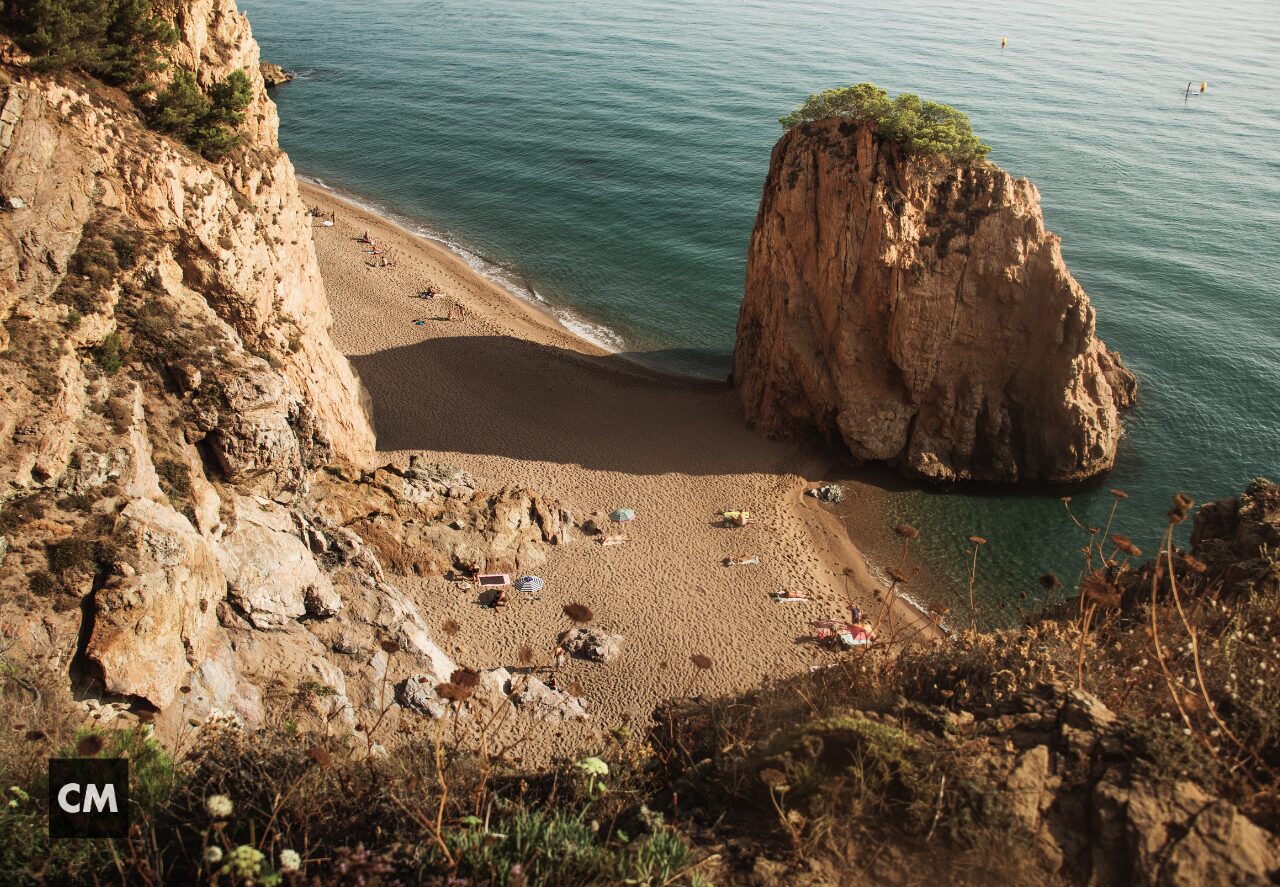
The Costa Brava is famous for its spectacular beaches and cliffs, but beyond the tourist areas, it hides real natural treasures: small secret coves where nature shows itself in its purest state. If you like to explore quiet and little-known corners, here we present some of the secret coves of the Costa Brava that will take your breath away.
1. Cala S’Alguer (Palamós)
Just a few minutes from the hustle and bustle of Palamós, there is Cala S’Alguer, a small corner of peace surrounded by picturesque fishermen’s houses. With its peaceful atmosphere and crystal clear waters, it is ideal for those looking to get away from the crowds. Access on foot is easy via the Camí de Ronda, and the sense of tranquility upon reaching this cove will transport you to another era.
Ideal for: Relaxing and enjoying a picturesque landscape.
Access: On foot from the port of Palamós, walking along the Ronda path.
2. Cala del Pi (Platja d’Aro)
Hidden among rocks and Mediterranean vegetation, Cala del Pi is a paradise for those who love snorkelling and tranquility. Although it is close to Platja d’Aro, this small cove remains relatively secluded and offers the perfect environment to disconnect. The waters are crystal clear, which makes it an excellent choice for discovering marine life.
Ideal for: Snorkeling and swimming in transparent waters.
Access: On foot along the Camí de Ronda from Platja d’Aro.
3. Cala Aiguafreda (Begur)
Located near Sa Tuna, Cala Aiguafreda is a little-frequented cove, protected by cliffs and pine trees. It is a rocky cove, perfect for those looking for a wild and authentic environment. It does not have a sandy beach, but its tranquility and natural beauty compensate for this detail. It is also an excellent starting point for exploring by kayak or snorkelling.
Ideal for: Snorkeling, kayaking and enjoying nature.
Access: Easily accessible by car and then a short walk.
4. Cala Illa Roja (Begur)
This nudist cove, hidden between high cliffs, is known for its large reddish rock that gives it its name. Cala Illa Roja is a quiet and discreet corner, perfect for those looking for a more secluded place. The waters are crystal clear and the surroundings are spectacular, surrounded by vegetation and rocks. It is one of the most impressive coves in the area.
Ideal for: Naturists and those looking for a quiet environment.
Access: On foot from the Camí de Ronda between Sa Riera and Pals.
5. Cala Estreta (Palamós)
If you are looking for a real paradise away from the crowds, Cala Estreta is an ideal choice. This hidden corner is located between Palamós and Calella de Palafrugell, accessible only on foot or by bicycle via the Camí de Ronda. The wild beauty, the clear waters and the calm atmosphere make it one of the most special places on the Costa Brava.
Ideal for: Disconnecting and enjoying nature.
Access: On foot from Platja del Castell along Camí de Ronda.
6. Cala Tamariu (Tamariu)
Although Tamariu is a more well-known destination, the small cove that bears its name offers a quiet and charming atmosphere. Surrounded by pine trees and traditional white houses, this cove is perfect for a relaxing getaway. Its waters are ideal for swimming and enjoying a sunny day at the coast.
Ideal for: Families and couples looking for a quiet cove.
Access: On foot from the center of Tamariu, easily accessible.
Tips for Visiting Secret Coves on the Costa Brava
Wear comfortable shoes: Some coves are only accessible on foot, so it is advisable to wear shoes suitable for walking on rocky paths.
Go early: To enjoy the tranquility and avoid the crowds, it is best to visit these coves early in the morning.
Bring food and drink: Many of these coves do not have services, so it is advisable to bring your own water and snacks.
Respect the environment: These coves are natural jewels that must be preserved, so it is important to respect the environment and take your rubbish with you.
The Costa Brava hides secret coves that are true natural treasures, ideal for those looking for a bit of peace and nature in its purest state. Each of these coves offers something special, be it crystal clear waters, stunning landscapes or an atmosphere of tranquility. If you like exploring and discovering hidden corners, don’t hesitate to visit some of these wonderful secret coves on your next getaway.
How to get to Cala del Pi in Platja d’Aro: A Paradise on the Costa Brava
Posted on by Sebastià Morató
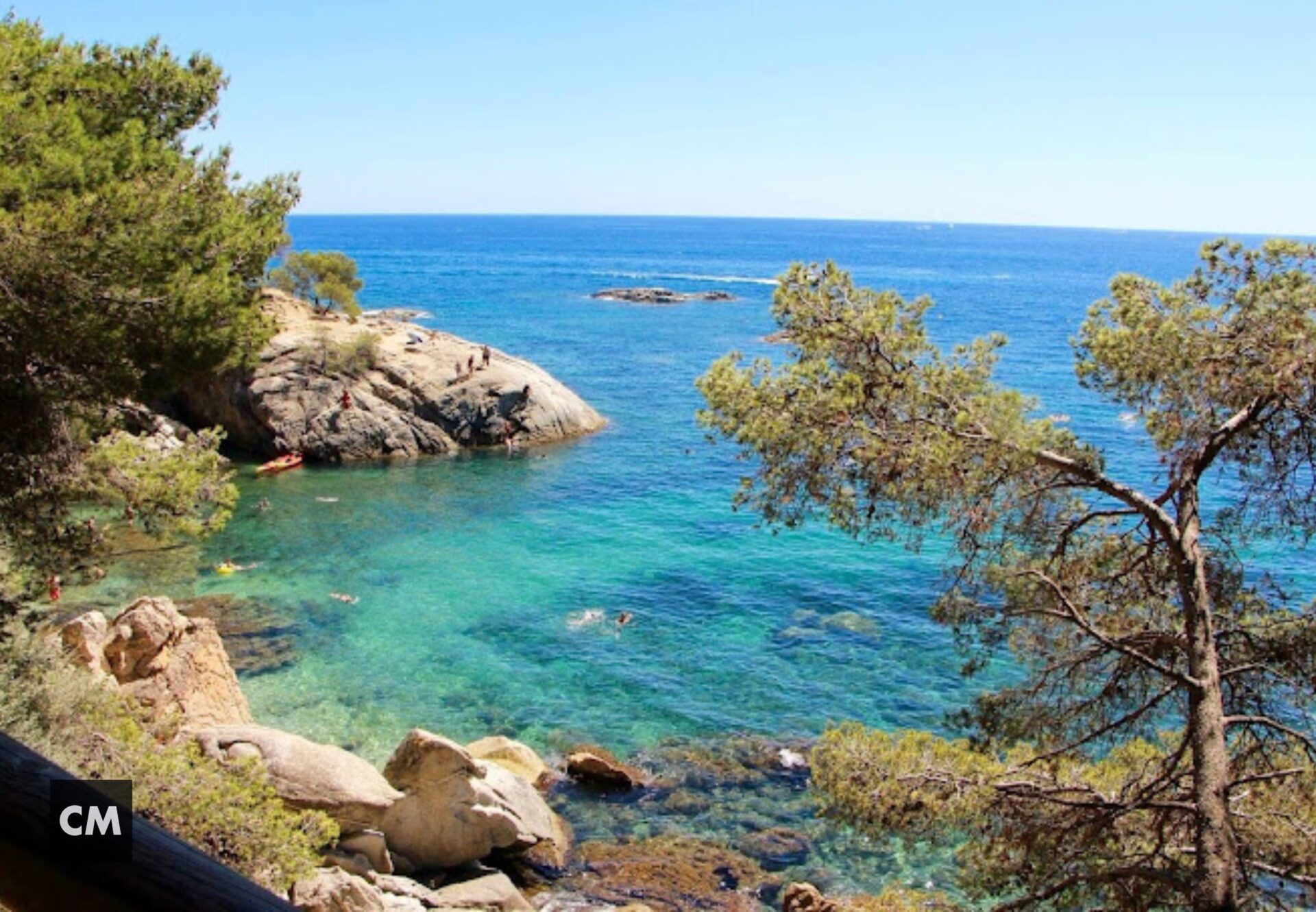
Cala del Pi, in Platja d’Aro, is one of the most spectacular corners of the Costa Brava. This small cove, surrounded by pine trees and with crystal clear waters, is perfect for those looking to enjoy the tranquility of the sea in a unique natural environment. If you are wondering how to get to Cala del Pi in Platja d’Aro, here we give you a complete guide to access this wonderful hidden paradise.
Where is Cala del Pi?
Cala del Pi is located in Platja d’Aro, in the Baix Empordà region, on the Costa Brava. It is located between the popular Cala Rovira and the smaller Cala Belladona, which makes it an ideal place for lovers of hidden and quiet coves. Cala del Pi is known for its transparent waters and its natural environment, surrounded by rocks and pines, which makes it perfect for relaxing, swimming or snorkeling.
How to get to Cala del Pi by car
From Barcelona: If you come from Barcelona, the journey by car takes approximately 1 hour and 30 minutes. Take the AP-7 in the direction of Girona and then take exit 9A towards Sant Feliu de Guíxols/Platja d’Aro. Continue along the C-35 and then continue along the C-65 until you reach Platja d’Aro.
From Girona From Girona, the journey is shorter, approximately 40 minutes. You must take the C-65 in the direction of Platja d’Aro.
Once you arrive in Platja d’Aro, you can park in the parking areas near Avinguda Cavall Bernat, which is one of the town’s main streets, or look for parking in nearby streets. From there, accessing Cala del Pi is very easy by walking for a few minutes.
How to get to Cala del Pi on foot
To reach Cala del Pi on foot, it is best to follow the Ronda route, a coastal route that covers a large part of the Costa Brava. The Camí de Ronda will take you to Cala del Pi from the center of Platja d’Aro in around 15-20 minutes, depending on your starting point.
Start at Platja Gran: You can start the walk from Platja Gran in Platja d’Aro. Follow the Ronda road in a northerly direction, passing through Cala Rovira. The trail is well signposted and offers a spectacular view of the Mediterranean. After a 10-15 minute walk, you will reach Cala del Pi.
Direct access from Avinguda Cavall Bernat: If you prefer faster access, from Avinguda Cavall Bernat, look for the stairs that take you directly to the cove. The access is quite simple, although some areas of the trail can be rocky, so it is recommended to wear comfortable shoes.
Public Transport in Platja d’Aro
If you don’t have a car, you can also get to Platja d´Aro by public transport. From Barcelona there are direct buses that leave from Barcelona Nord station and drop you off at Platja d’Aro. The journey takes approximately 2 hours. From Girona, there are also buses that will take you to Platja d’Aro in around 1 hour.
Once in the center of Platja d’Aro, you can walk towards Cala del Pi following the previous directions.
What to Expect in Cala del Pi
Cala del Pi is a small and quiet cove, with a mixture of coarse sand and rocks, surrounded by Mediterranean vegetation. The waters are clear and perfect for snorkeling and exploring the local marine life. As it is a less accessible cove than other larger ones, it is usually less crowded, which makes it an ideal place to enjoy the peace and natural beauty of the Costa Brava.
There are no services such as bars or bathrooms in the cove, so it is advisable to bring water and everything you need to spend the day.
If you are looking for a quiet cove with a special charm on the Costa Brava, Cala del Pi is undoubtedly an excellent choice. Easily accessible from the center of Platja d’Aro, either by car or walking along the Ronda path, this cove will surprise you with its natural beauty and crystal clear waters. Do not hesitate to include it in your next visit to the Costa Brava, in Corredor Mató we have ideal accommodation for an unforgettable stay!

